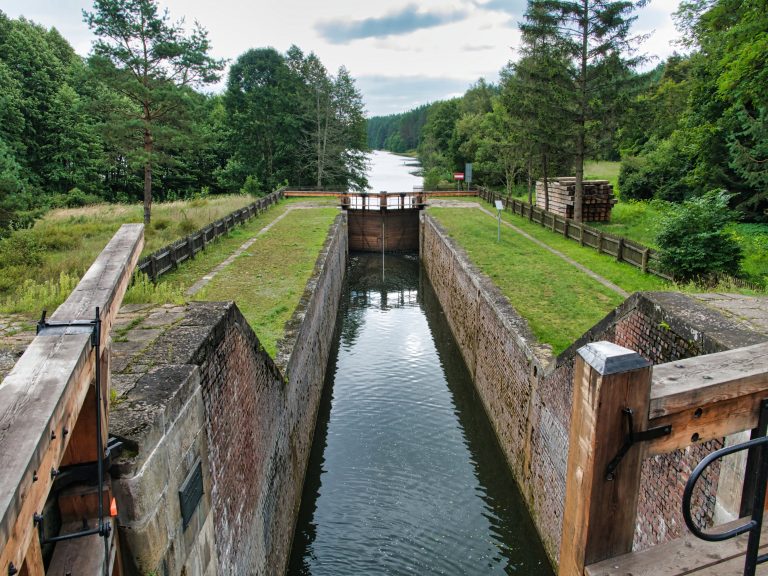Augustów Canal
Augustów Canal is a sea lane which couples Wisła with Niemen through the Narew and also Dubyssy and Widawy with Baltic port in Widawa. The Canal is 101 km long, 82 km are located in Poland and the next 19 km in Belarus. It was created in 1824 – 1839 as a result of Prussia’s action which was interrupting the Kingdom of Poland in its trading business, including floating grain down the Vistula to Gdańsk. The construction of a waterway enabling the transport of goods excluding Prussian lands was initiated by the Minister of Treasury of the Kingdom of Poland, Prince Ksawery Drucki-Lubecki. The tsar only, contrary to the prince’s idea, commissioned the construction of the investment – to the army. The idea of building the Augustów Canal was born in the minds of Polish ministers, but it required the approval of Tsar Alexander I. It is worth mentioning that it was the most expensive investment in the Kingdom of Poland at that time.
While traveling through the Canal, we can see a total of 18 locks, with very diverse levels – from 0,86m to 6,29m. As many as 14 locks are located in the Polish part of Augustów Canal. Paniewo Lock is worthy of some special attention. It is the only two-chamber lock in Europe created because of the land depression of the 61 km long part of Augustów Canal. The lock was renovated multiple times. The first one took place before world war I and all the damages were caused by the huge water press and its filtration. Next renovation was connected with violation of the lock’s structure during the partisan fights of world war II. The lock was fully renovated with preservation of its historic aspects and it’s now fully functional.



